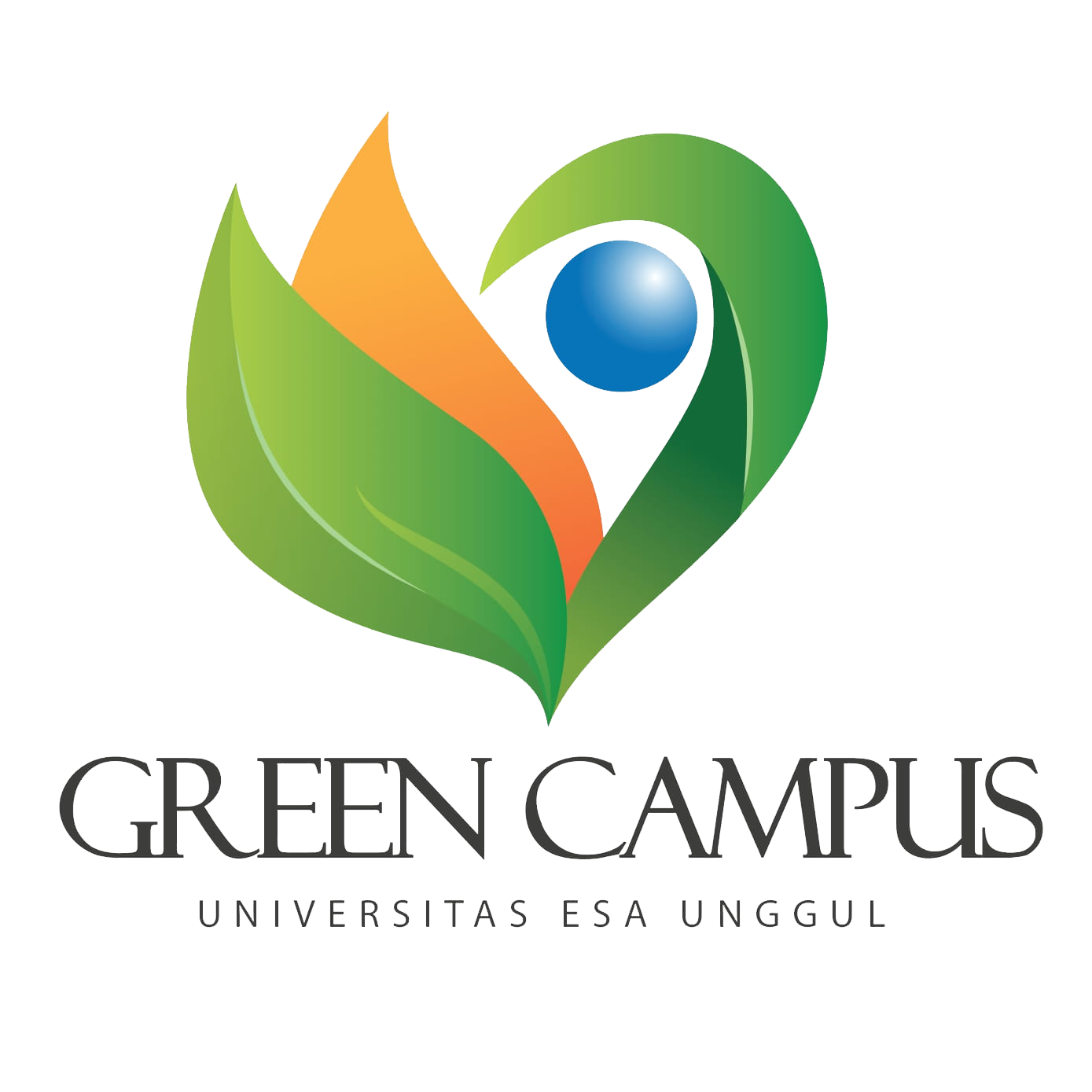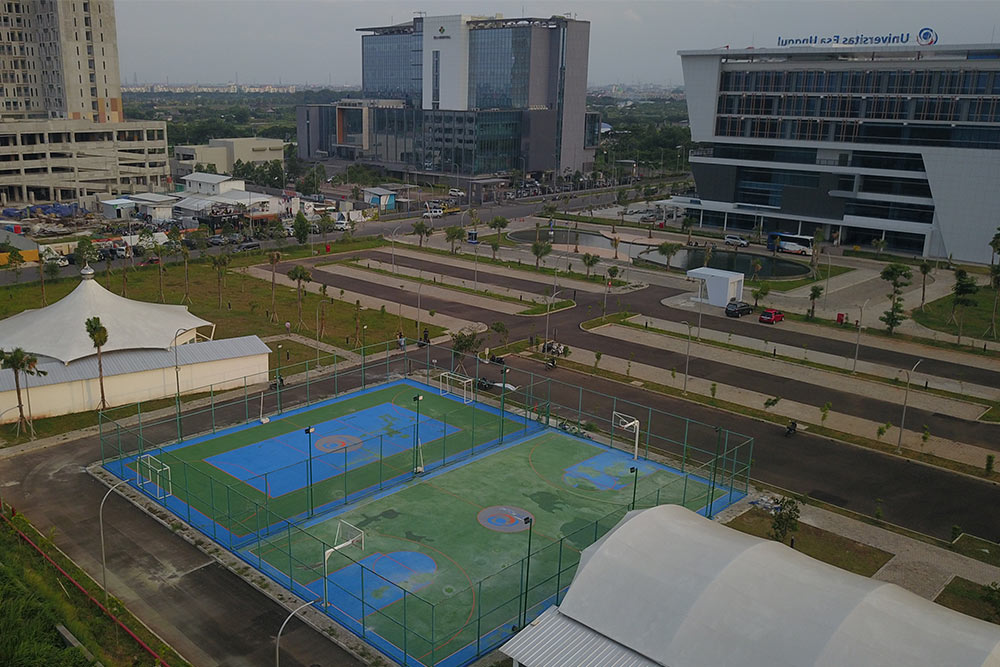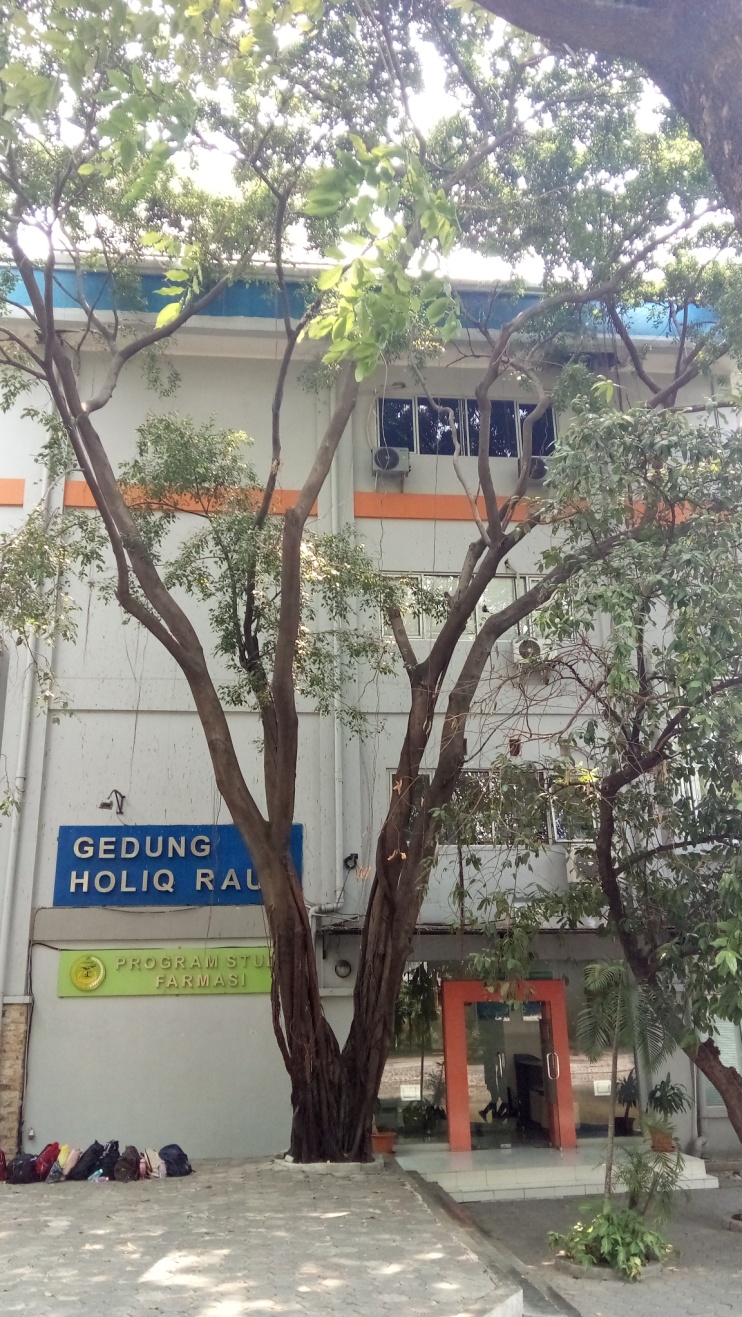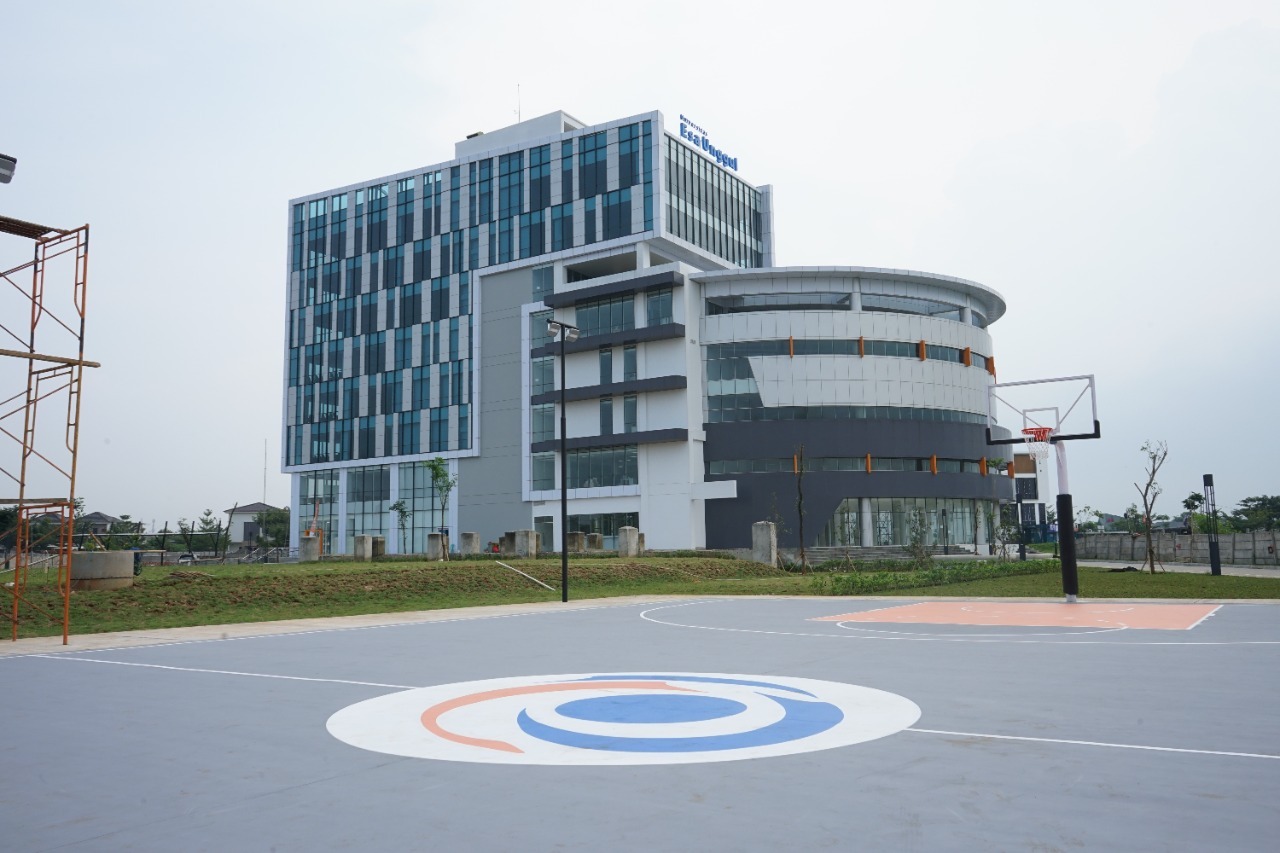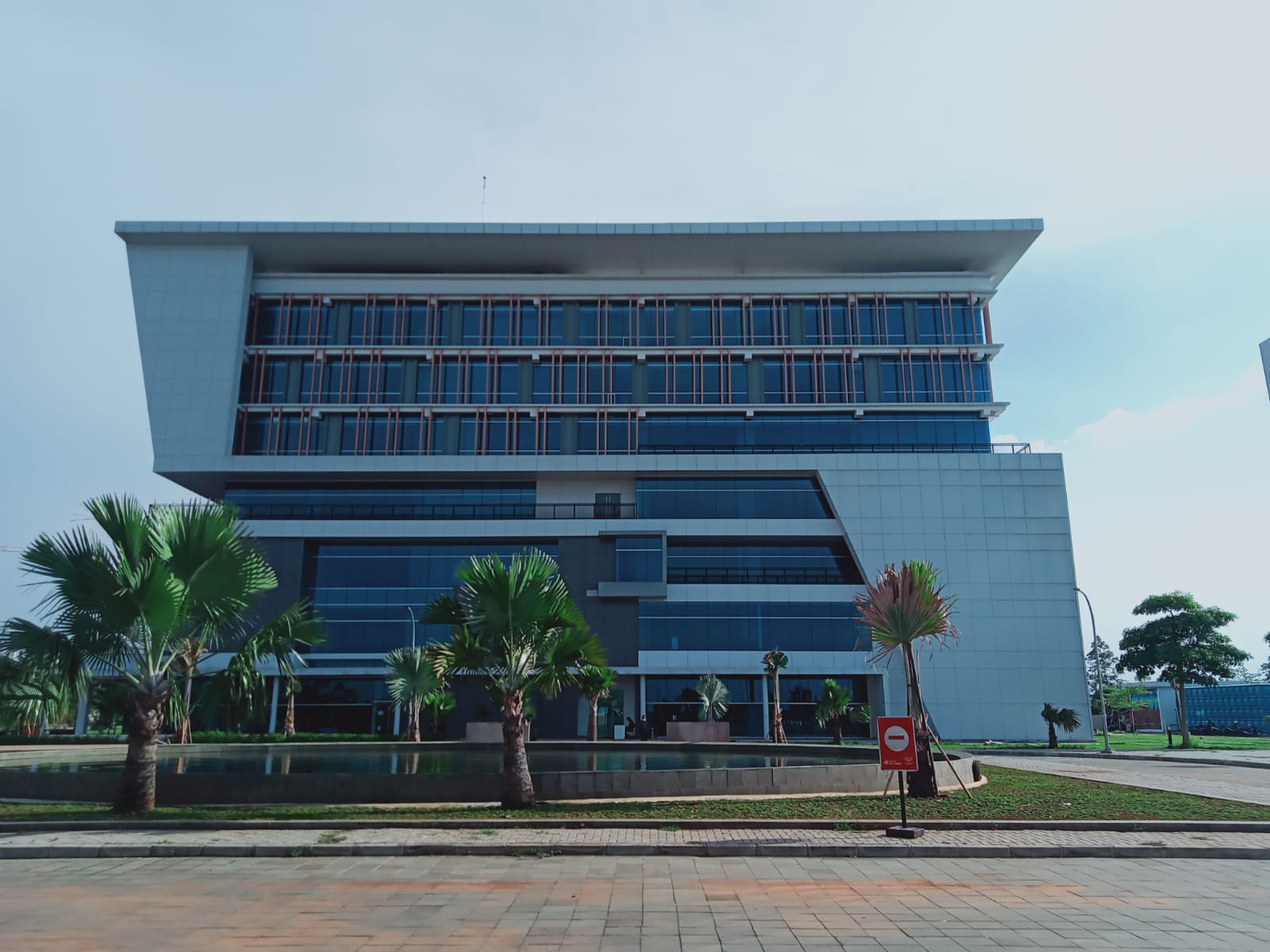[2] Energy and Climate Change (EC)
[2.1] Energy Efficient Appliances Usage
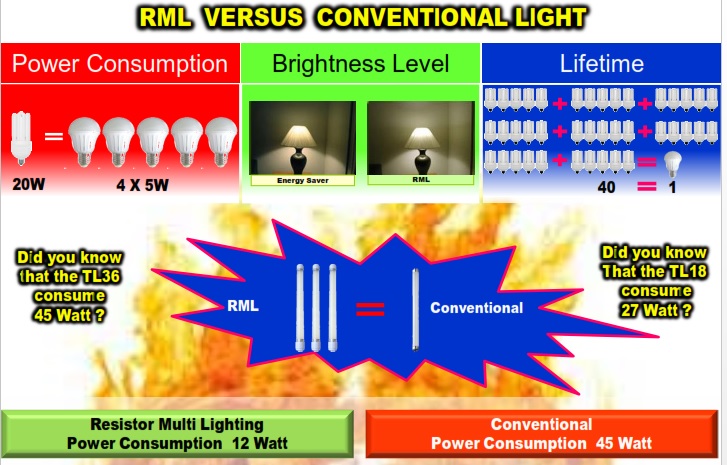
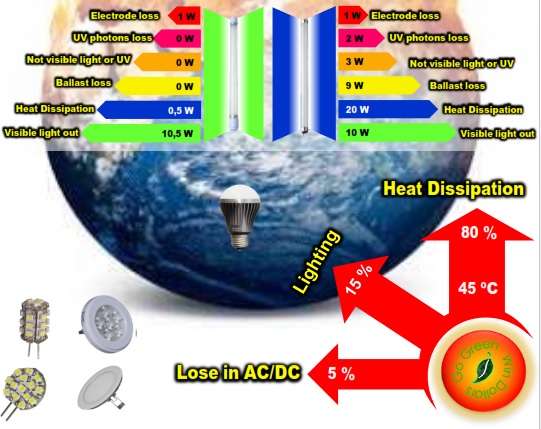
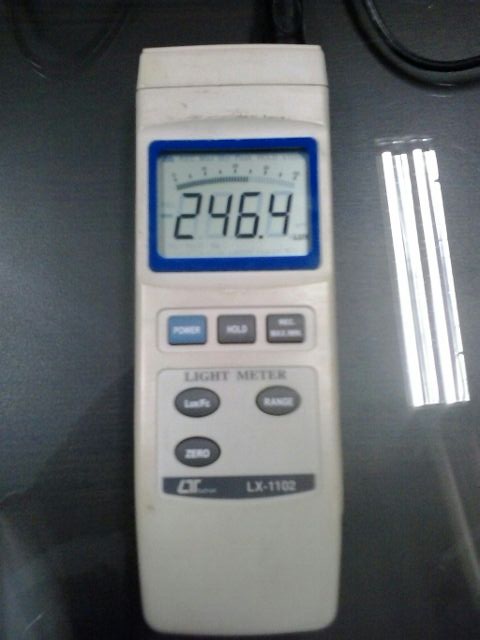

Esa Unggul University collaborates with BANK ENERGY in terms of using energy-efficient lamps and is easy to implement at universities, Bank Energy has LED lamp technology that is very energy efficient, easy to use and has a brighter light than conventional lamps. From the table above, it can be reflected that the use of energy-saving lamps can reduce the burden of electricity consumption.
Freon is used for air conditioning on campus

Esa Unggul also collaborates with energy banks in the use of Freon for air conditioning that is very environmentally friendly and does not damage the earth’s ozone layer, this has been implemented at Esa Unggul University.
Esa Unggul University has used air conditioning technology that is environmentally friendly and electricity efficient, namely using Air Conditioner Variable Refrigerant Volume (VRV), AC VRV uses inverter technology on Variable Refrigerant Volume (VRV) type air conditioners commonly used in multi-storey buildings.VRV is an AC capacity-setting technology that has the ability to prevent excessive cooling, thus saving electricity.
VRV III is designed for large rooms in multi-storey buildings, with several features including:
1.Has a large capacity for large rooms anyway, where:
- Outdoor units with capacities up to 54 PK / Two types of combination outdoor units
- Range of indoor units / connected up to 64 indoor units
- Length pipe length / Difference level
- Height of external static pressure 2.Installation and maintenance of ac is quite easy.

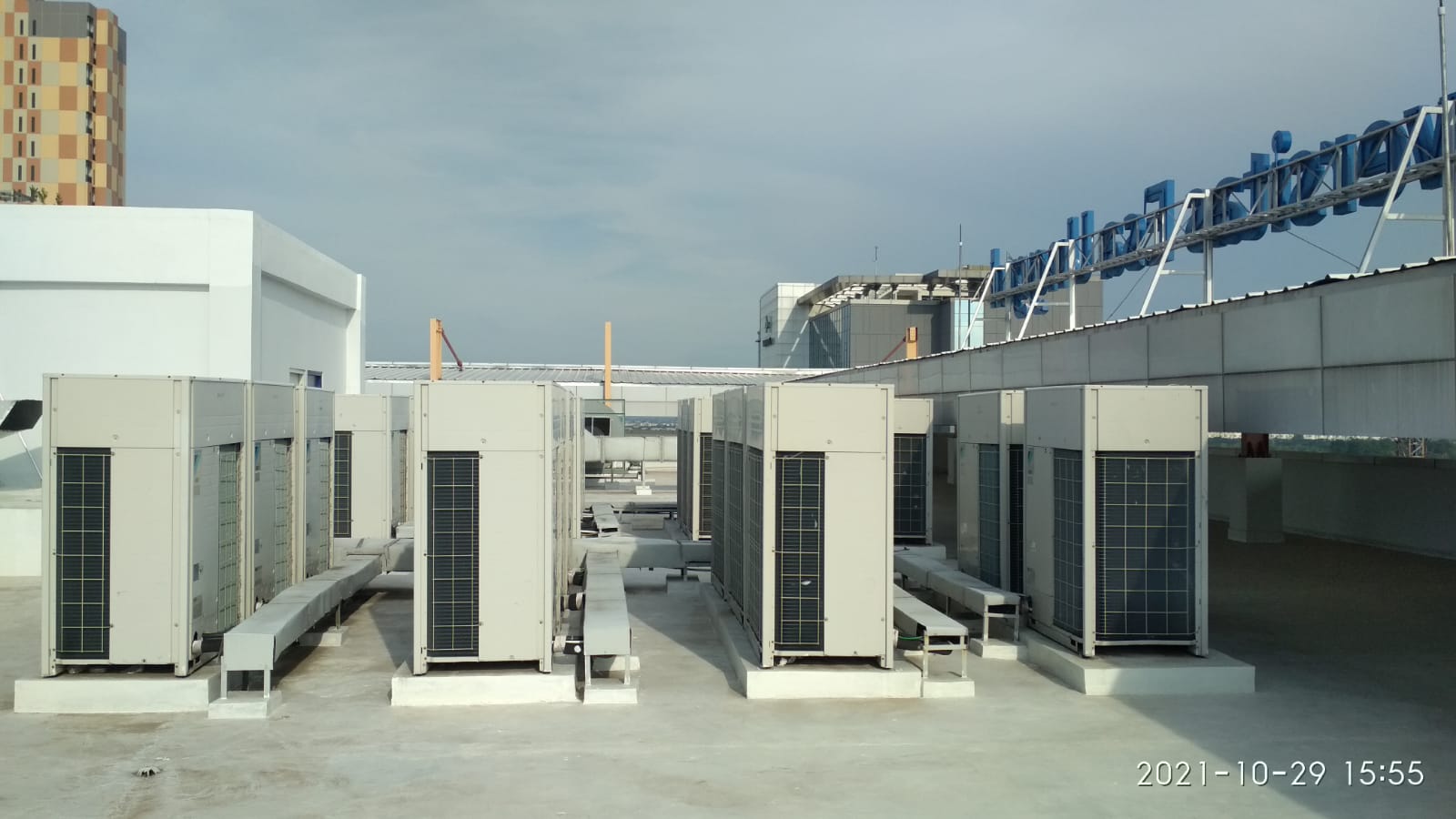
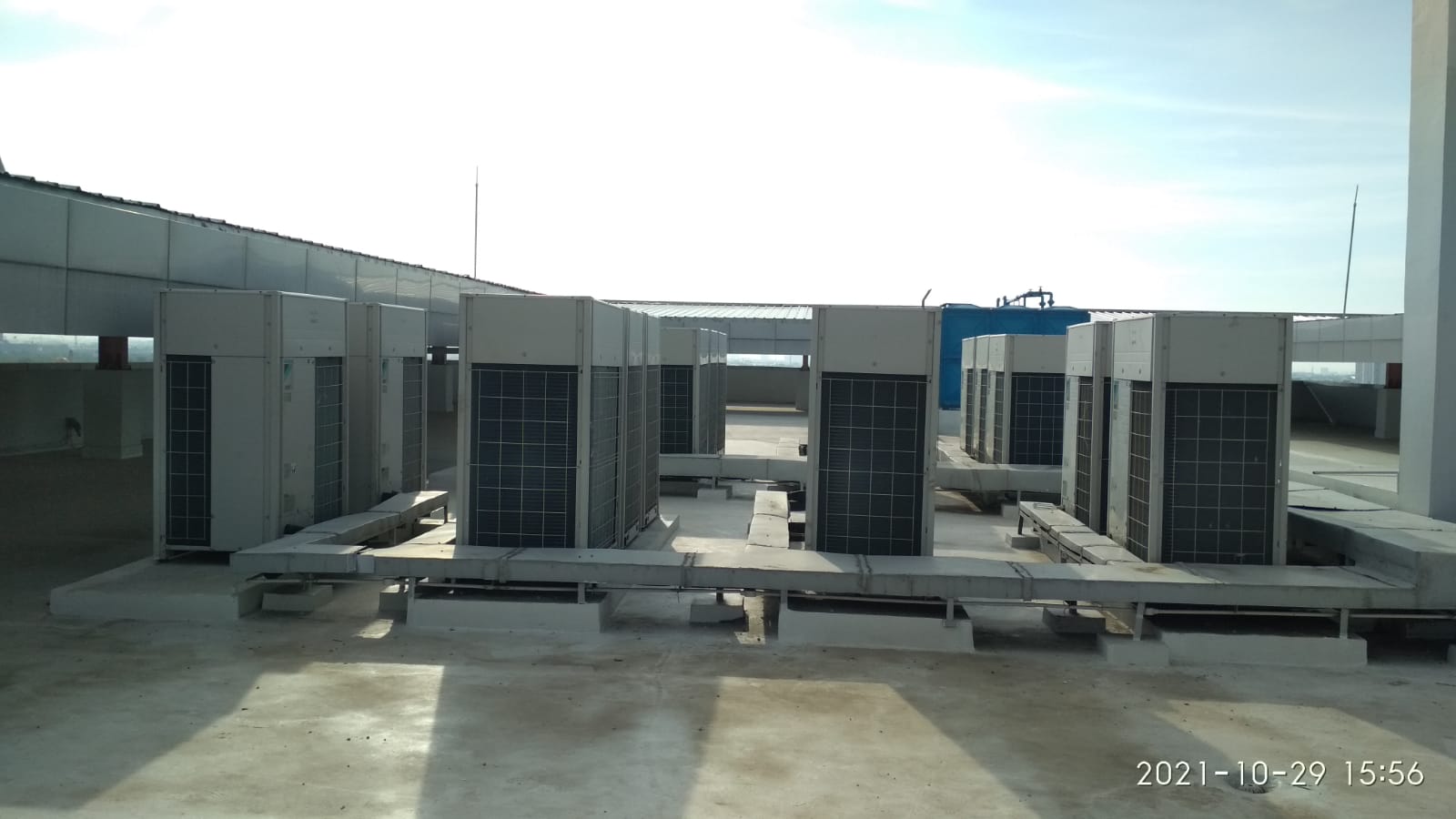
This air conditioner that has used very sophisticated inverter technology can detect human body temperature in the room and adjust the room temperature needed automatically, and the control and monitoring system has been equipped with a Bulding management system that can detect air conditioners on / off and can adjust indoor temperatures on one screen.
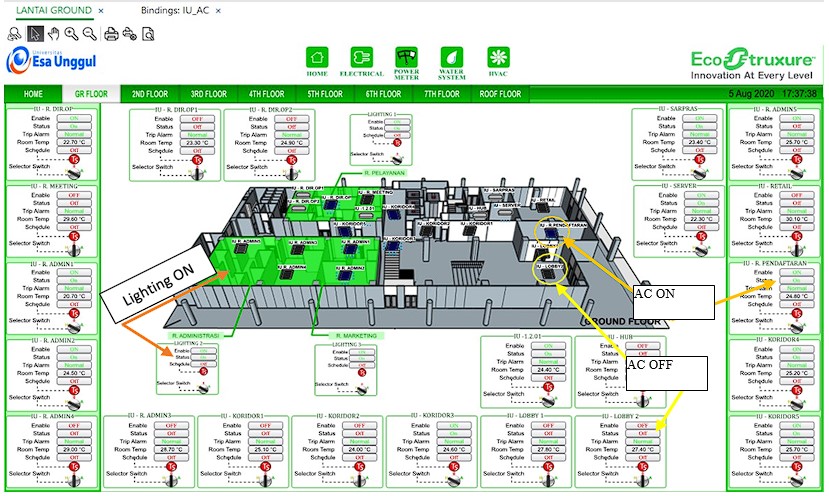
[2.3] Smart Building Implementation
Universitas Esa Unggul – Kebon Jeruk – Jakarta
Building A | Building B |
 |
|
Building C | |
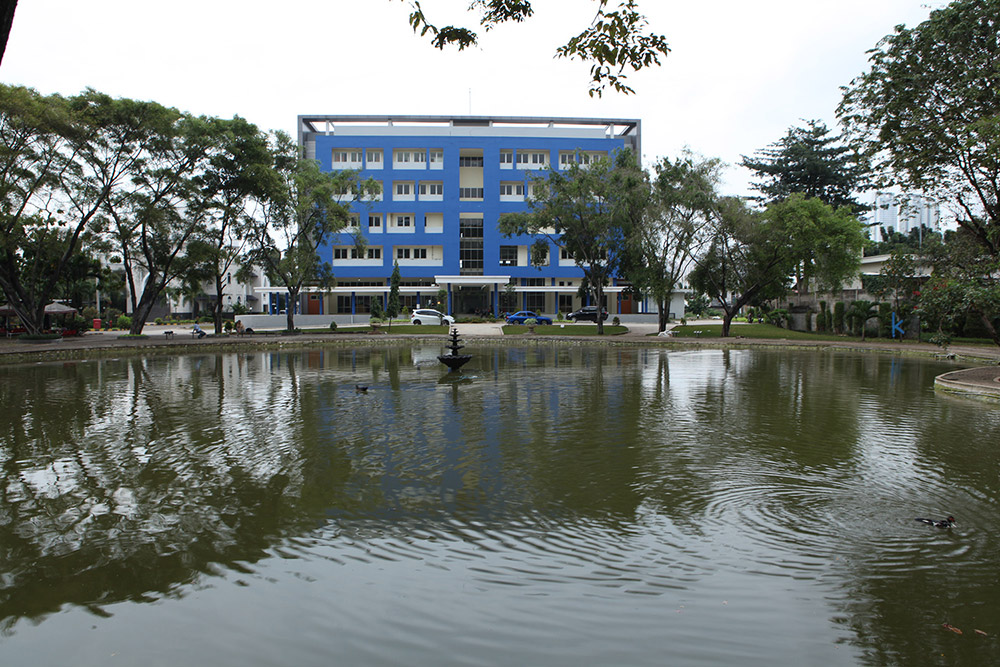 |
Universitas Esa Unggul – Cikupa – Tangerang
Building A | Building A |
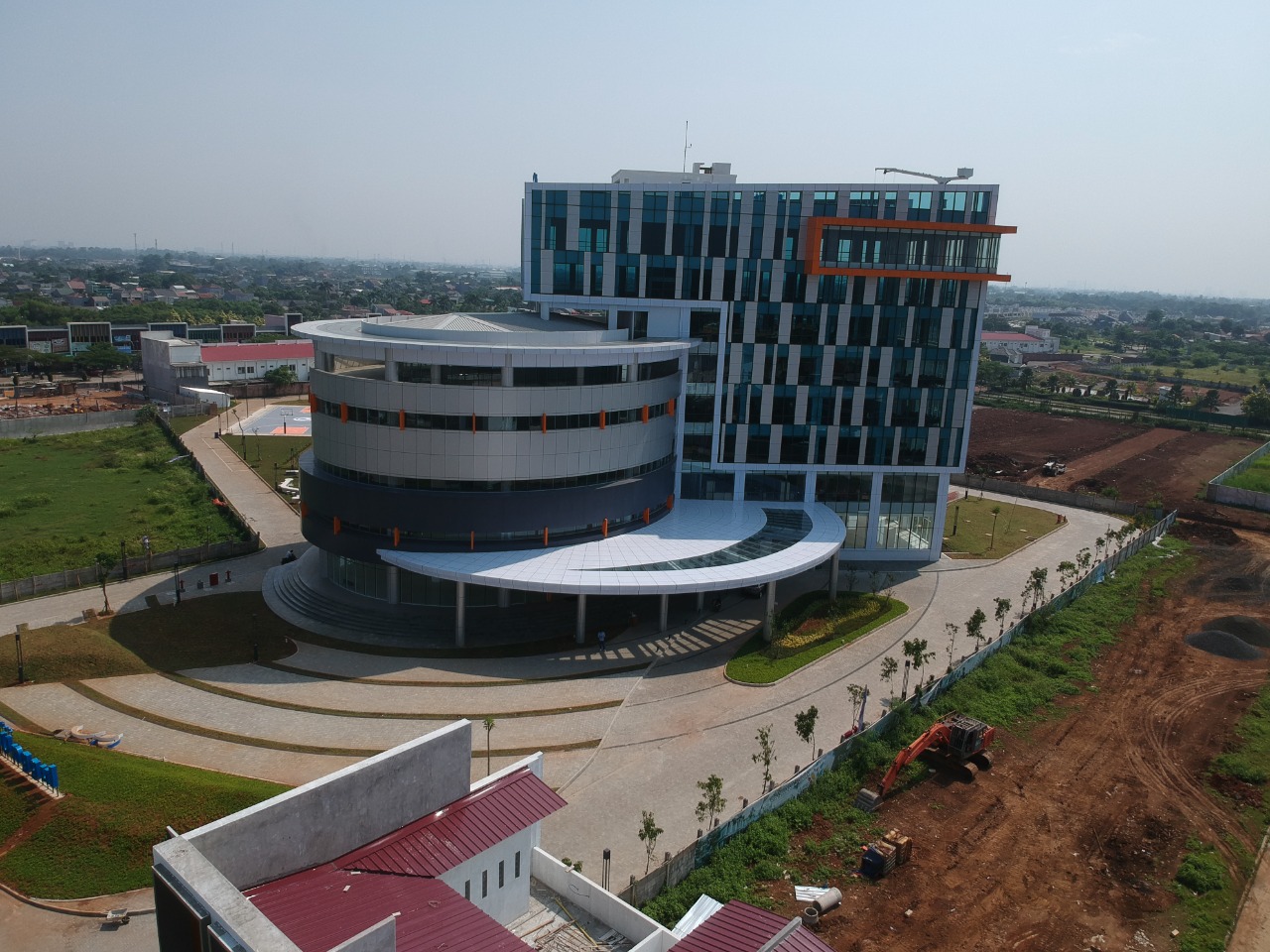 |
|
Universitas Esa Unggul – Bekasi
Building A | Building B |
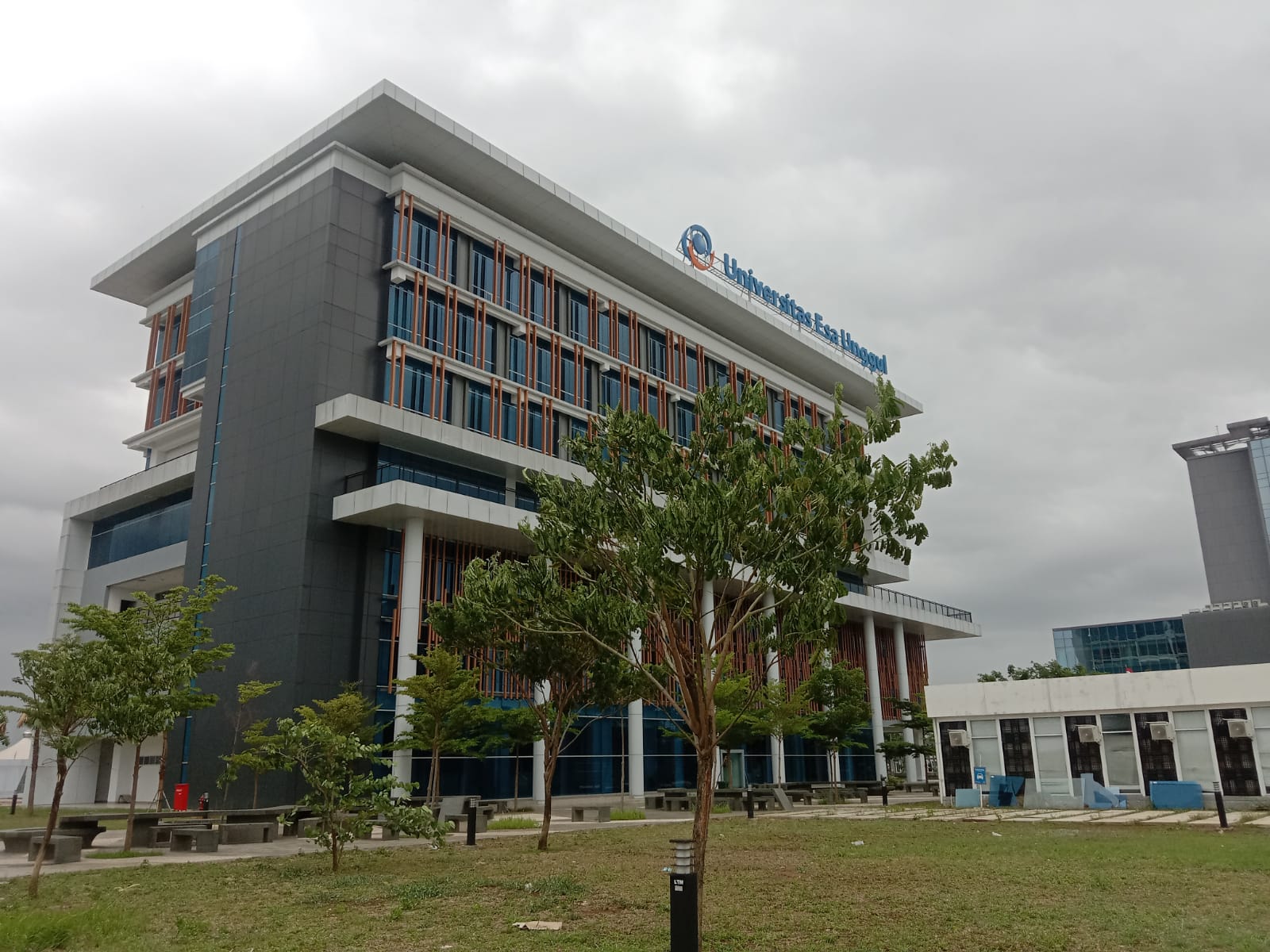 |
|
Esa Unggul University already has 3 campus buildings that have been built with the concept of green building and supported by a Smart building System, where the green building concept of Esa Unggul University thinks and implements starting from lighting sourced from the sun can shine all rooms in the building. As well as the support of a smart building system that can regulate, monitor the use of energy in the building ranging from lights, air conditioning, water, and building security systems in a state of fire, this is a tangible form of esa university excelling in saving energy and protecting the Earth.
[2.5] Renewable Energy Sources in Campus
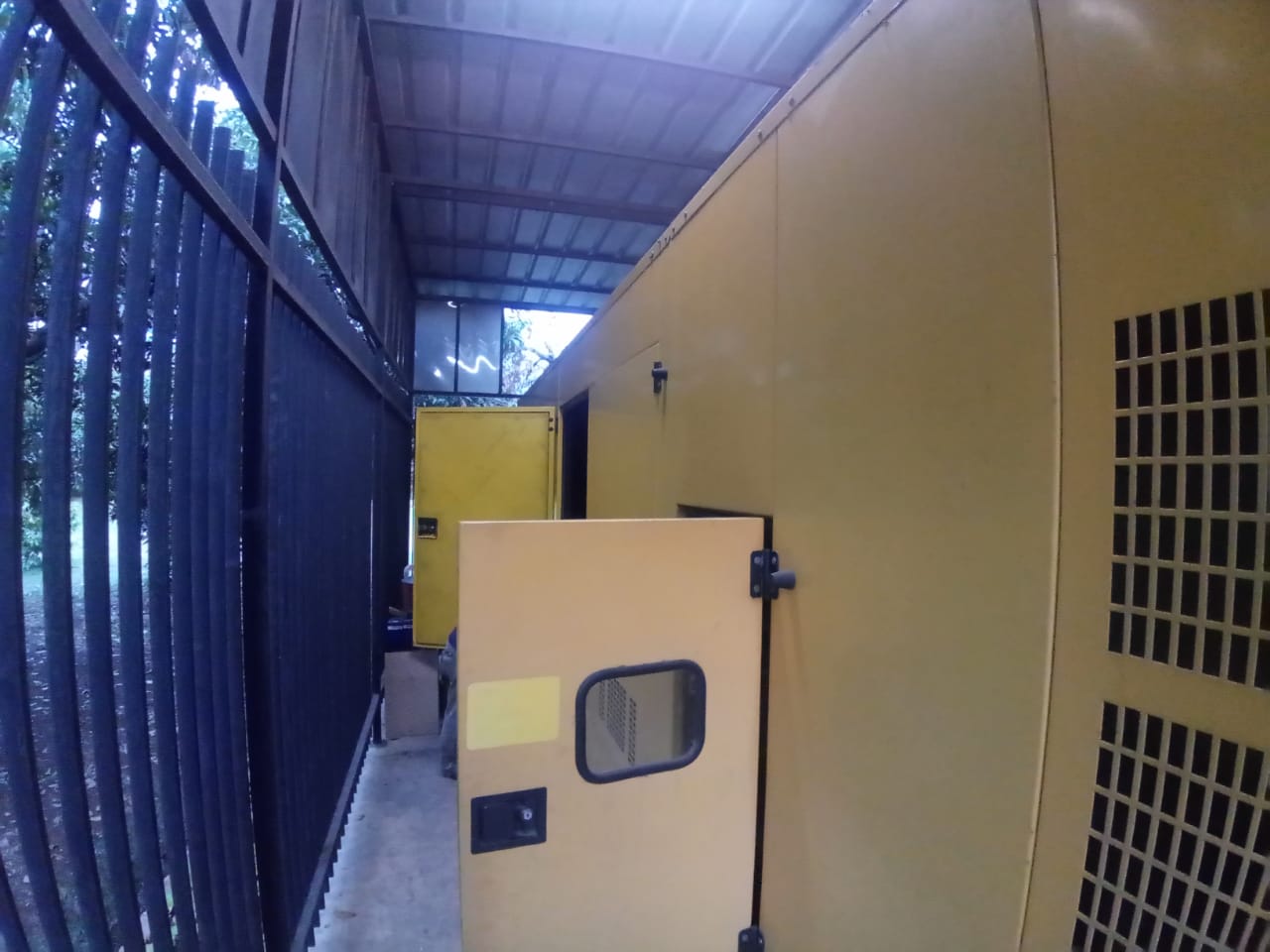
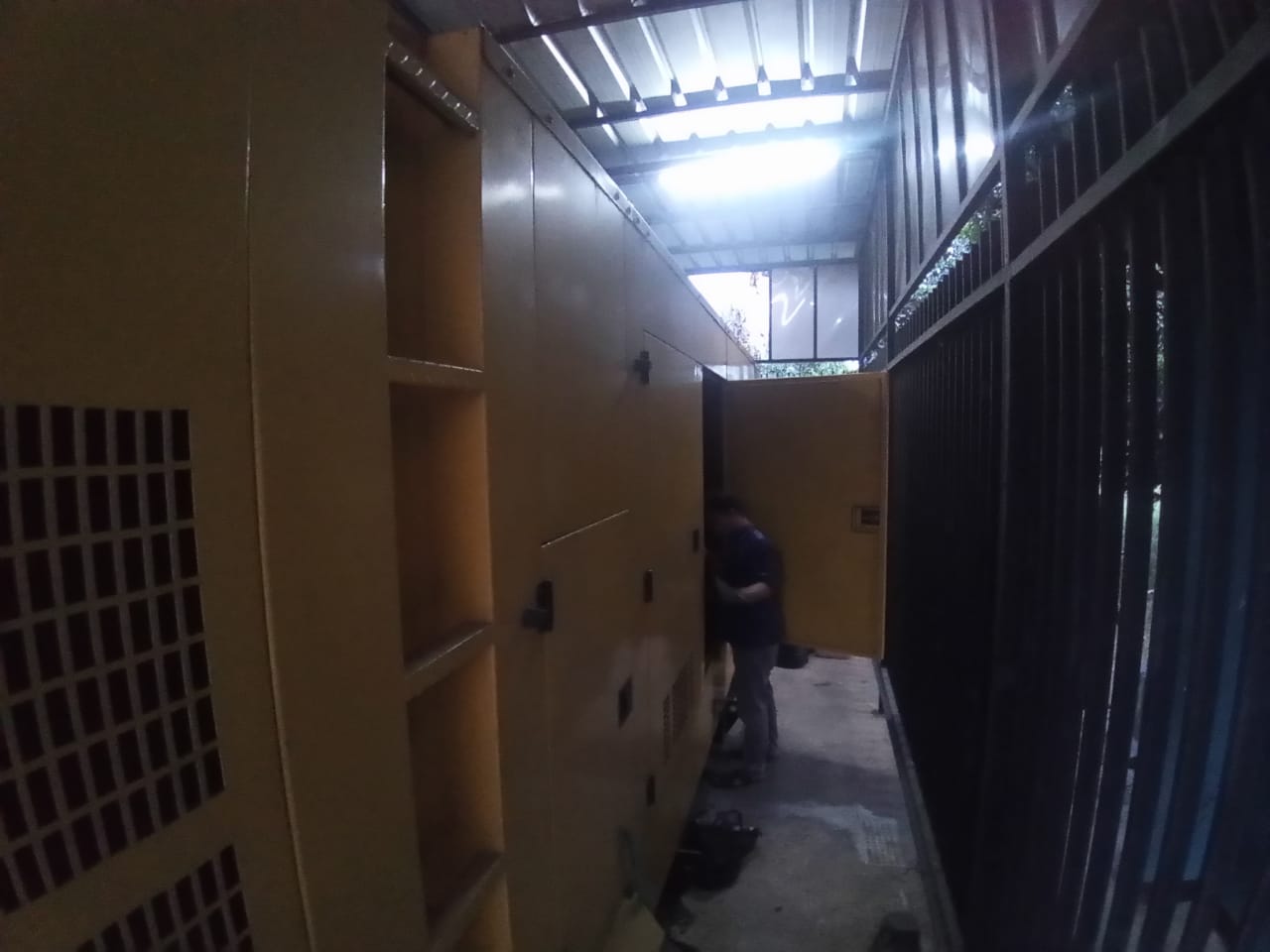

Biodiesel Generator and Power Integration Unit (Esa Unggul University – Jakarta)
Esa Unggul University – Kebon Jeruk, Jakarta already has a renewable energy source namely BIO DISEL with building capacity A 1000Kwh and Building C 720Kwh.
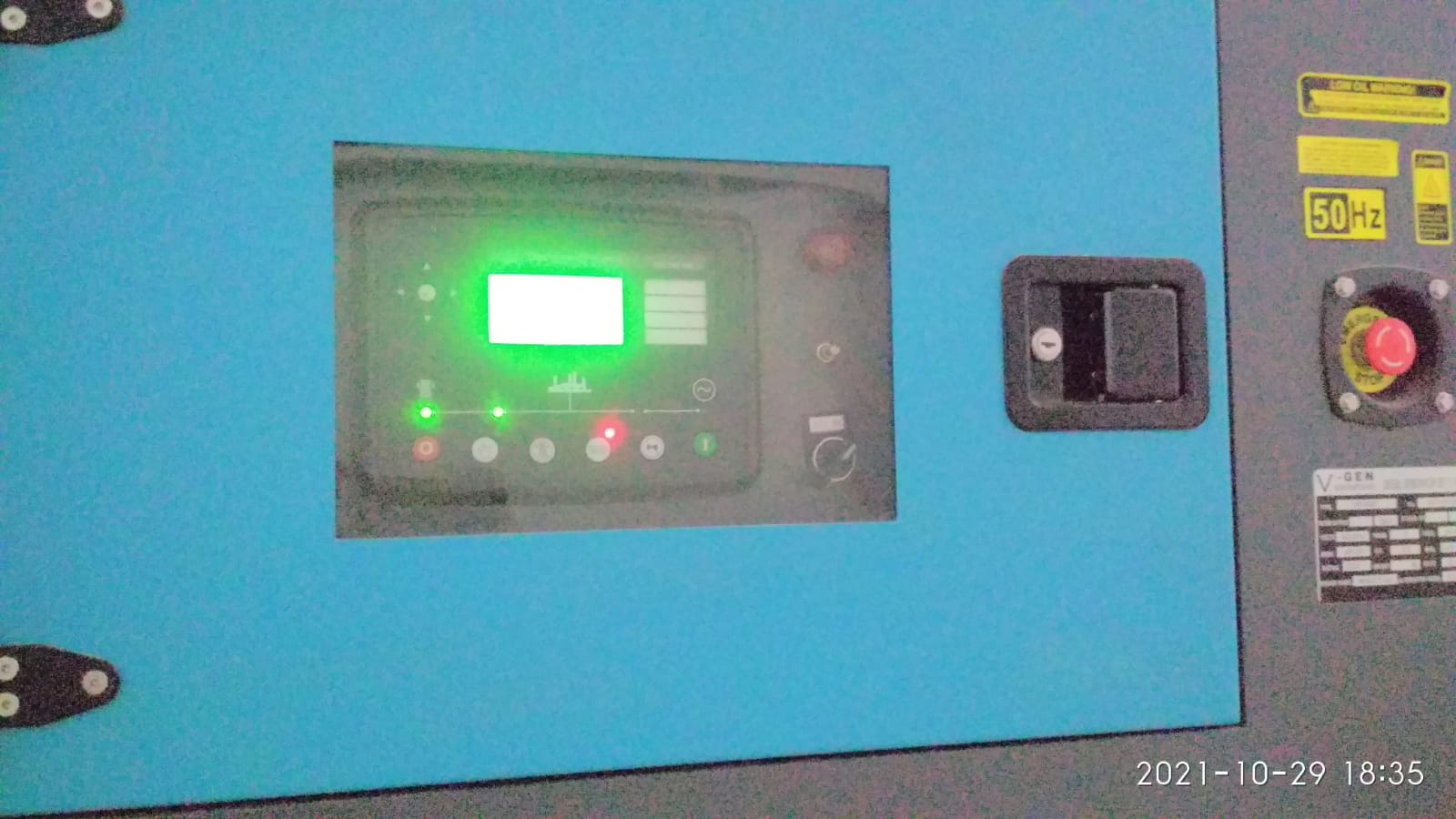
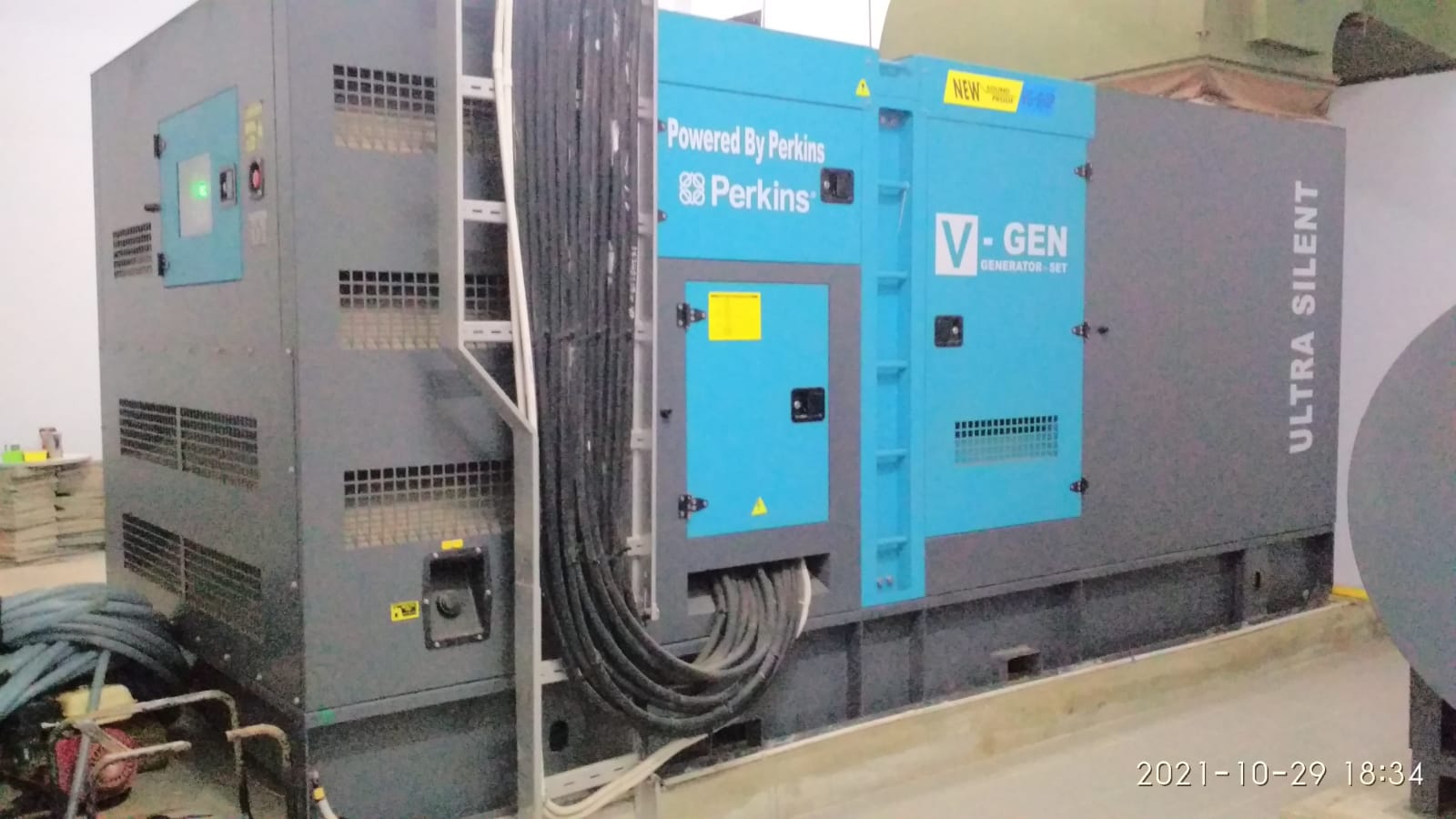
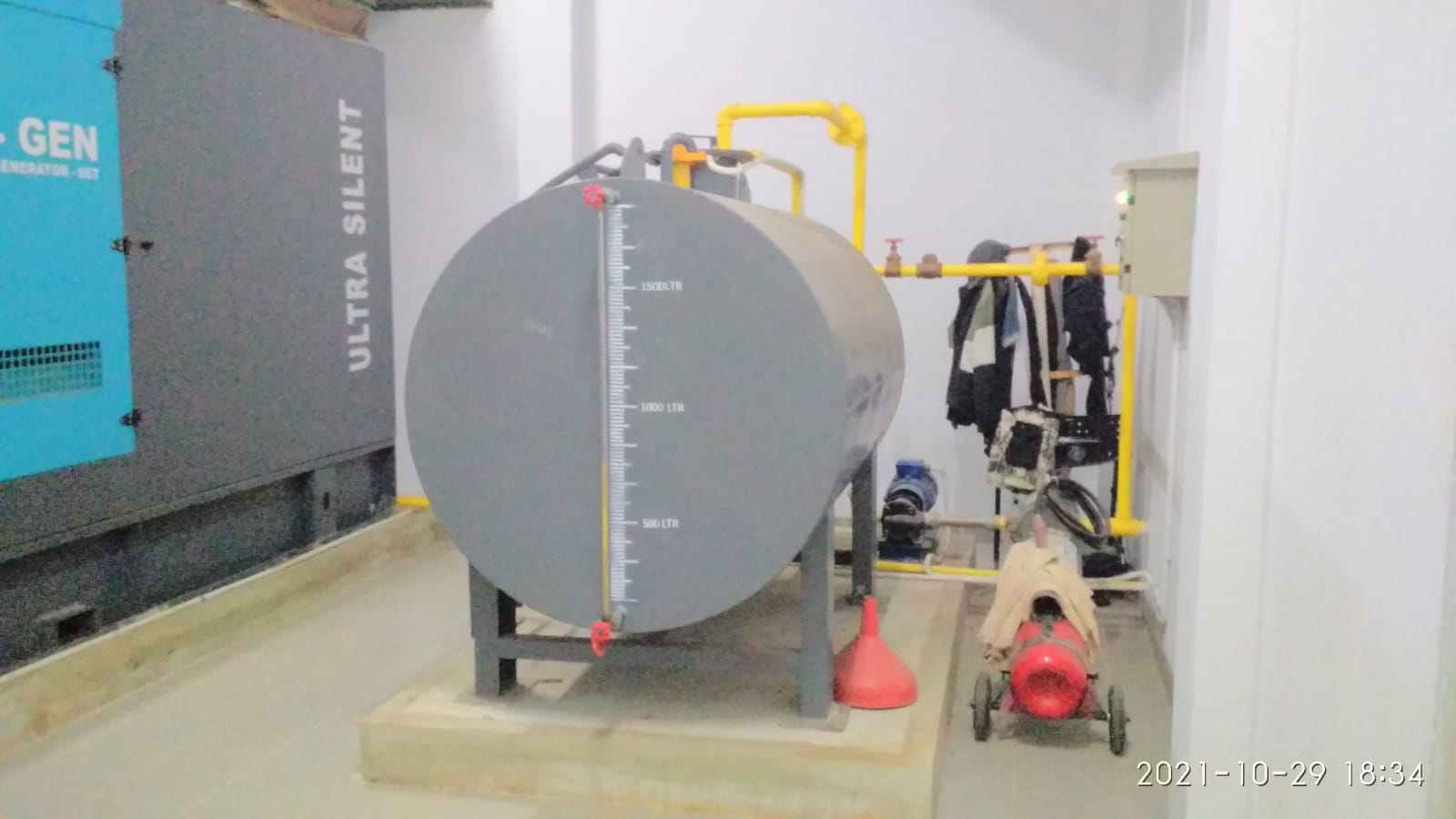
Biodiesel Generator and Power Integration Unit (Esa Unggul University – Bekasi)
Esa Unggul University – Bekasi already has a renewable energy source, namely BIO DISEL with a capacity of 520Kwh that reaches the entire building area as well as the main street lights.

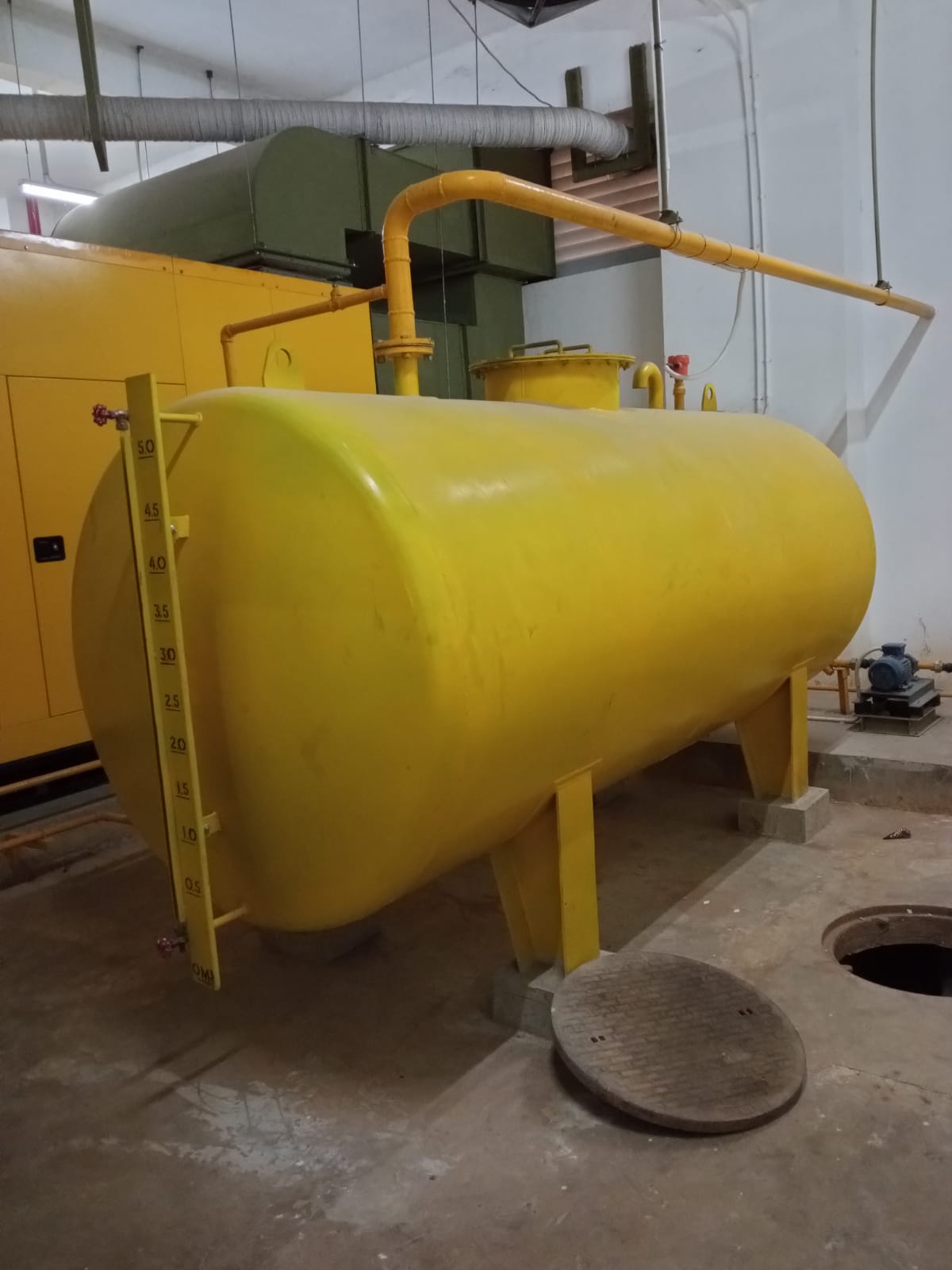
Biodiesel Generator and Power Integration Unit (Esa Unggul University – Cikupa – Tangerang)
Esa Unggul University – Cikupa- Tangerang already has a renewable energy source, namely BIO DISEL with a capacity of 640Kwh that reaches the entire building area as well as the main street lights.
[2.6] Electricity Usage per Year (in Kilowatt hour)

The average electricity usage for the Esa Unggul Kebon Jeruk University Campus – Jakarta in 2019 was 136,294 kWh. in 2020 there was a decrease in the use of electrical energy due to the Covid-19 Pandemic making campus activities eliminated, in 2020 the average electricity use was 70,015Kwh. in 2021 there was a slight increase in electricity consumption due to several campus activities held on a limited basis by complying with health protocols, electricity use in 2021 to running on average 75,331kwh.
[2.8] ratio of renewable energy production divided by total energy usage per year

No | Renewable Energy | Production (in kWh) |
1 | Biodiesel | 2880 |
2880 / 75331 (Electricity usage) = 26.5 %
Esa Unggul University also has a renewable energy source that is fueled by bio-diesel in the form of a generator, the generator set owned by esa unggul university can cover the entire campus area. This generator is not only used during emergencies, but also used occasionally to support campus activities while maintaining and monitoring the power plant generators in this generator, and can reduce the use of electricity sourced from PLN.
[2.9] Elements of Green Building Implementation as Reflected in All Construction and Renovation Policies
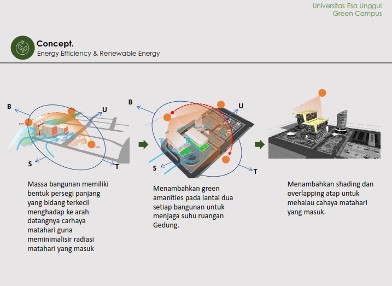
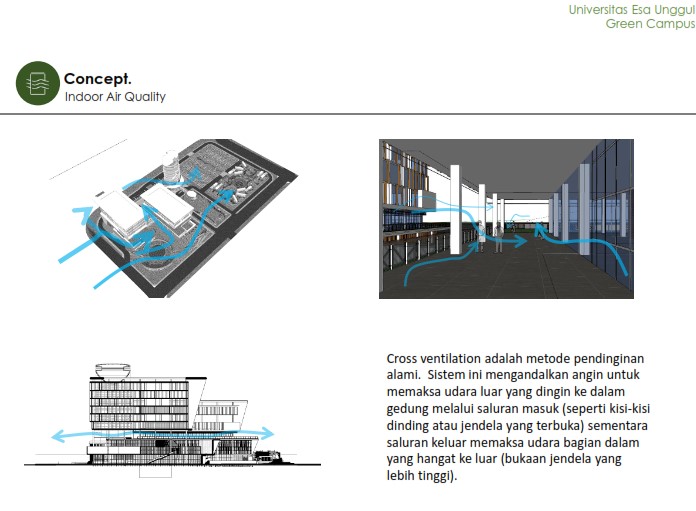
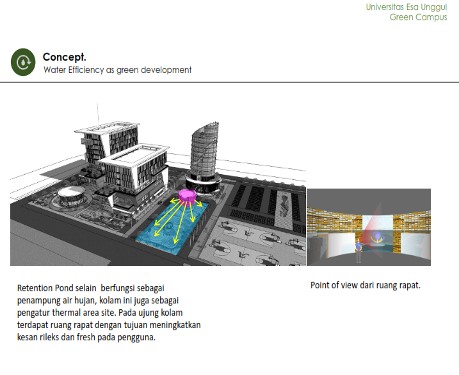
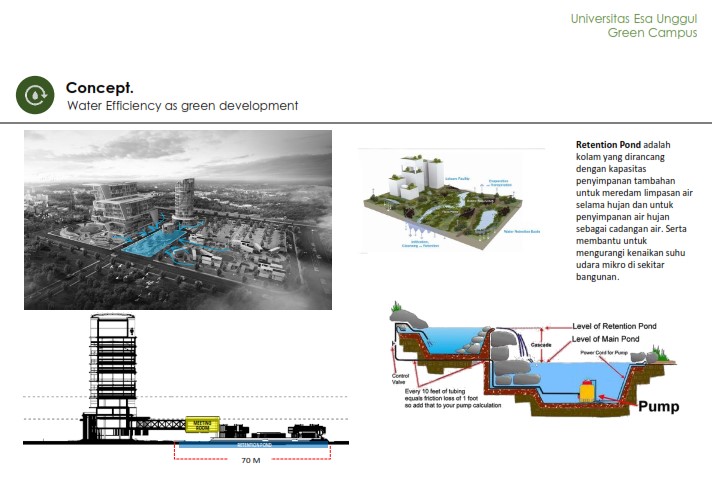
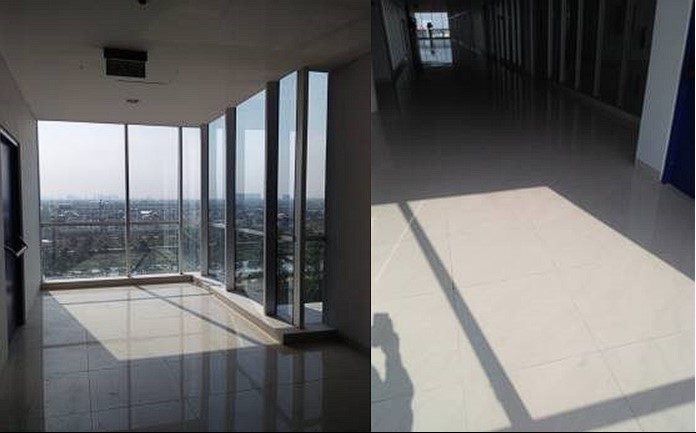
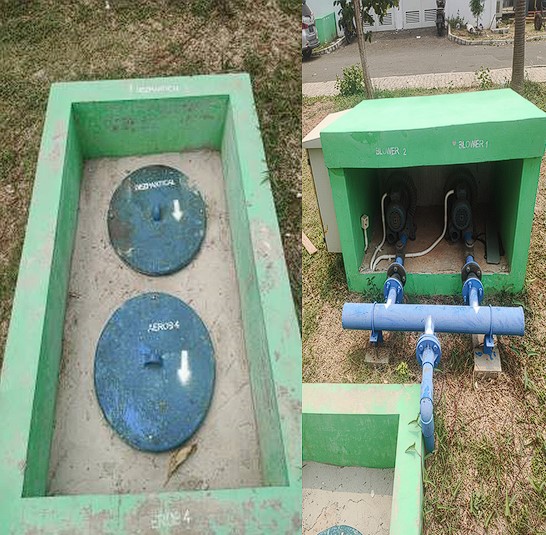
- Esa Unggul University has implemented Green Bulding where the university building is designed with the concept of solar lighting but still comfortable while in the building, with the concept of 75% of the building highlighted by the morning and evening sun, this concept can save the use of electricity for lighting.
- In addition to superior esa university lighting also utilizes rainwater channeled through the rooftop media of the building channeled to the source of water catchment and reused to water plants and grass around the campus area
- Esa Unggul also has a Biotank sewage treatment plant (STP) system to overcome domestic waste processed domestic waste that has been tested safely if exposed to skin is used to water plants.Esa unggul has a rainfle pond that can hold rainwater up to 456000s of water, rainwater is accommodated in a rain pond and filtered to use artificial biovortex so that rainwater becomes cleaner and safer for fish and aquatic plants.
Additional evidence link (i.e., for videos, more images, or other files that are not included in this file):
[2.10] Greenhouse gas emission reduction program
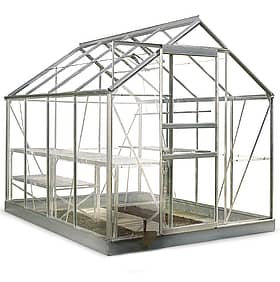

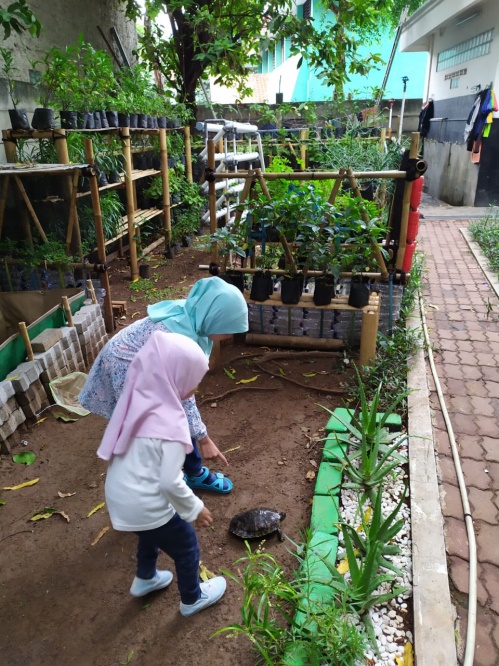
With the greenhouse and plant planting on campus can absorb carbon dioxide (CO2) levels, increase oxygen, lower the temperature with shade and coolness of plants, become a water catchment area, and reduce noise.
[2.11] Please Provide The Total Carbon Footprint (CO2 emission in the last 12 months, in metric tons)
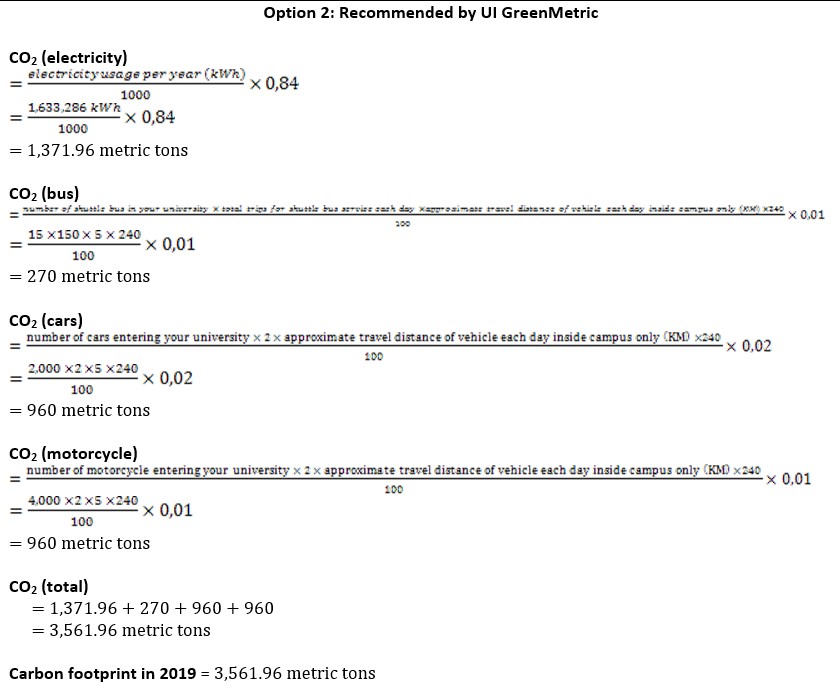
From the calculation above, it can be illustrated that esa’s commitment to excellence in reducing Co2 emissions in the campus area implemented from several programs such as limiting students to use private vehicles to campus, advising students to use shuttle transportation that has been provided by the campus, advising students to use public transportation or online transportation, with some of these programs Esa Unggul University can contribute to protecting the earth from Co2 emission.
[2.13] Number of innovative program(s) in energy and climate change
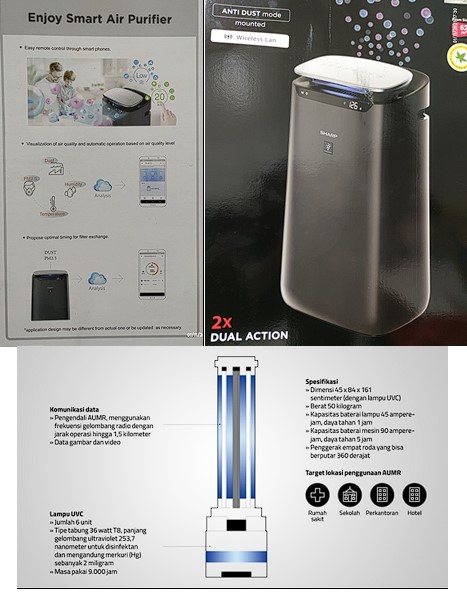
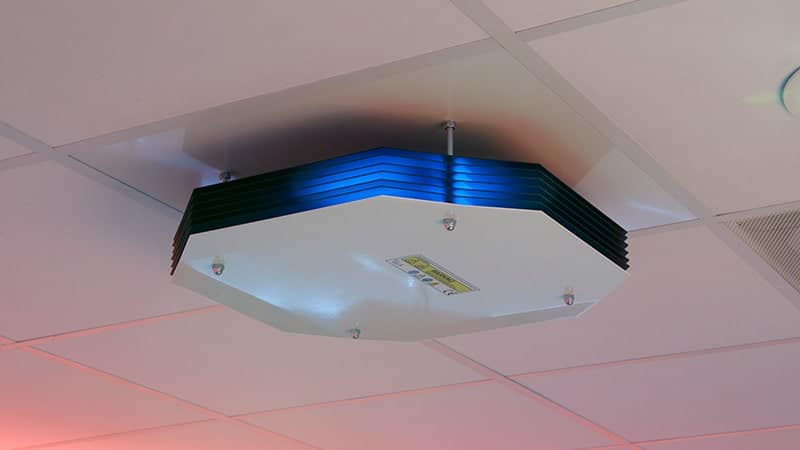
The use of UVC rays and smart air purifiers in every room used in meetings or meetings at small scales, is also used in meeting rooms with a capacity of 50 people.Smart air purifier is to clean the room air from bacteria or viruses that rotate from the air from the air conditioner.
UVC is used to maintain air quality standards despite the dynamics of cooling load and the dynamics of biological pollutants in the room. There are also innovations in room sterilization using UVC rays for biological
Pollutants attached to the surfaces such as benches, floors, and walls. Irradiating of rooms is carried out automatically every time the room is about to be used or after an activity and can be automated via condition sensors attached to PC-operated web cams.
The irradiation process is carried out at certain time intervals when the room unoccupied. During the process the door is closed and information is displayed to users outside. UVC wavelengths can be remotely regulated so they can be used for multi-organic sterilization of pollutants (biological pollutants).
[2.14] Impactful university program(s) on climate change
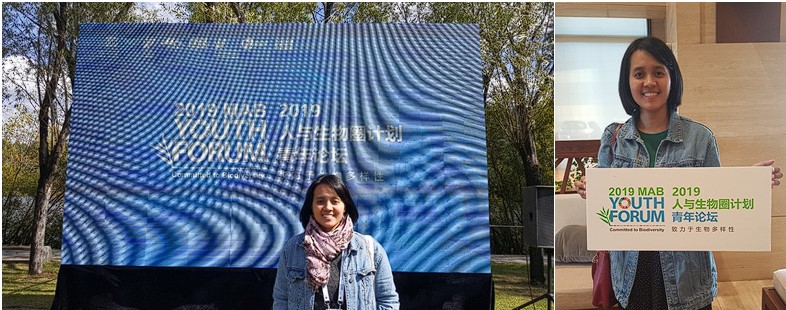
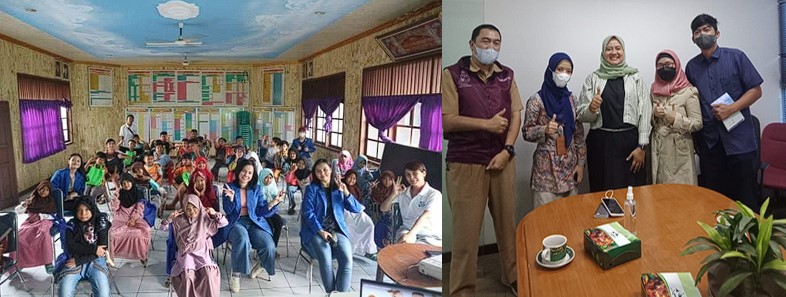
UEU Biotechnology Lecturer Radisti Ayu Praptiwi was one of the winners in the 2020 MAB Young Scientists Awards held by the United Nations Educational Scientific and Cultural Organization (UNESCO).Radisti said in the event he was successfully selected through his research that took the theme related to climate change entitled “Understanding the Impact Climate Change to Cultural Ecosystem Services in Tropical Marine Biosphre Reserve Taka Bonerate Kepuluan Selayar”.”In the selection process conducted by UNESCO, my research competes with a number of studies conducted by scientists from many countries, the process of research work was carried out for 1 year.
Providing education on the dangers of plastic waste to the environment, Esa Unggul University KKN students collaborate with the Ecomart Waste Bank in socializing with children.
The Real Work Lecture Group (KKN) of Esa Unggul University students conducted socialization and education in Lengkong Kulon Village for children, Sunday 10 July 2022.
We from Esa Unggul University certainly support and encourage us the Indonesian people to realize the SDGs as our shared responsibility, a visit from Bapeda and DKI bank for the appointment of the EU as SDG’s center and the launch of an EU waste bank that is appointed and fostered directly by Bapennas
Additional evidence link :
- https://www.esaunggul.ac.id/angkat-tema-perubahan-iklim-karya-dosen-bioteknologi-ueu-tepilih-di-scientists-award-unesco/
- https://www.google.com/url?sa=i&url=https%3A%2F%2Fwww.poros.id%2Fberita-utama%2Fpr-1673862426%2Fmahasiswa-kkn-universitas-esa-unggul-gandeng-bank-sampah-ecomart-edukasi-bahaya-limbah-plastik-pada-anak&psig=AOvVaw2hzX5AQw7uzM-w_Gaccs6f&ust=1667216546403000&source=images&cd=vfe&ved=0CA4QjhxqFwoTCPDPqOjvh_sCFQAAAAAdAAAAABAD
- https://www.esaunggul.ac.id/wujudkan-sdgs-di-lingkungan-perguruan-tinggi-ueu-bekerjasama-dengan-bank-dki-dan-bapennas/
